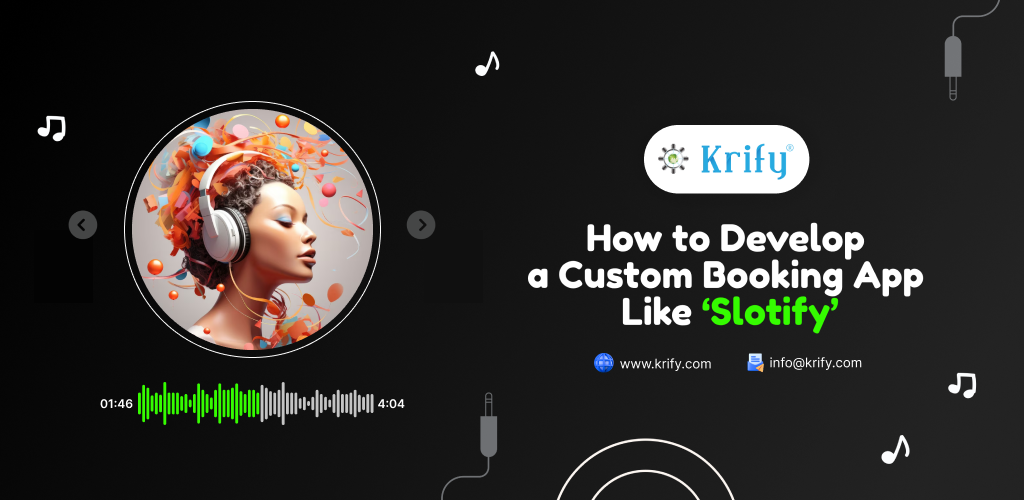In today’s fast-paced world, consumers prefer quick and efficient ways to book appointments. Apps like Slotify have set the standard for seamless booking, offering users a hassle-free experience. If you’re planning to develop a custom booking app similar to Slotify, this guide will walk you through the process step-by-step. With the right approach, tools, and strategy, you can build a high-quality booking app that meets the unique needs of your target audience.
Step 1: Conduct Market Research
First, analyze the market and competitors to identify trends and potential gaps. While researching, focus on user preferences to understand which features users value most. For example, smooth navigation, instant confirmation, and notifications are essential. This information will allow you to tailor your app to meet market demands.
Moreover, don’t forget to gather insights from potential users through surveys and interviews. As a result, this research phase will help you define your unique selling points and stay ahead of competitors like Slotify.
Step 2: Define Features for Your Custom Booking App
After gathering insights, it is time to decide on the features. Developing an MVP (Minimum Viable Product) first will allow you to launch faster and test the market.
Consider including:
– User Registration & Profile Management: Allow users to sign up using email or social media.
– Booking Calendar & Availability Management: Show real-time availability to reduce double bookings.
– Push Notifications & Reminders: Keep users informed about upcoming appointments.
– Payment Gateway Integration: Ensure users can make secure payments through various channels.
– Admin Dashboard: Empower service providers to manage bookings efficiently.
– Ratings & Reviews: Build trust by encouraging feedback from users.
Simultaneously, you must prioritize security, ensuring users’ personal and payment data is protected.
Step 3: Choose the Right Technology Stack
Selecting the right technology stack is critical to the performance of your app. If you want your booking app to be scalable and responsive like Slotify, using React Native or Flutter for cross-platform development can save time and cost. In contrast, if you plan to build separate apps for iOS and Android, Swift and Kotlin are ideal options.
Backend technologies like Node.js or Django work well for managing complex booking logic and APIs. Additionally, a reliable database such as MongoDB or PostgreSQL ensures smooth data handling. Ensure your app has cloud-based storage solutions like AWS for better scalability.
Step 4: Develop a User-Friendly UI/UX Design
User interface design plays a significant role in your app’s success. While building your custom booking app, ensure the interface is intuitive, visually appealing, and aligned with your brand identity.
Implementing simple navigation, clear buttons, and well-organized menus will improve the user experience. Furthermore, consider including a dark mode option, as users now prefer theme flexibility. By focusing on accessibility, your app can accommodate all types of users, ensuring a wider reach.
Step 5: Integrate Third-Party APIs
Integrating third-party APIs saves development time and enhances functionality. For instance:
– Use Google Calendar API to sync appointments across devices.
– Integrate payment gateways like PayPal, Stripe, or Razorpay to facilitate smooth transactions.
– Add SMS and email APIs for notifications and reminders.
– Utilize Google Maps API for location-based bookings if your service requires on-site visits.
Since these APIs handle critical functions, you must conduct thorough testing to ensure seamless integration and minimize bugs.
Step 6: Develop and Test the App
Development involves writing clean code while keeping future scalability in mind. After the initial coding, testing the app rigorously is essential to identify and fix any bugs. Automated testing tools can accelerate this process, but manual testing helps ensure a smooth user experience.
At this stage, you should test multiple scenarios, including payment processing, appointment scheduling, and user profile updates. In addition, don’t forget to test on various devices to ensure platform compatibility.
Step 7: Launch and Market the App
Once development and testing are complete, it’s time to launch your app on the App Store and Google Play Store. Ensure you comply with their guidelines to avoid delays in approval. Additionally, create a pre-launch marketing campaign to generate interest.
Using social media platforms, email marketing, and influencer collaborations can help you attract your initial users. You can also offer limited-time discounts to encourage early adopters. At the same time, engage with your users through feedback loops to refine your app after launch.
Step 8: Maintain and Update the App
Developing a custom booking app doesn’t end with its launch. Continuous maintenance is necessary to ensure the app performs well. Roll out regular updates to introduce new features, fix bugs, and address user feedback. Additionally, track user engagement metrics to understand how people interact with your app.
Integrate analytics tools like Google Analytics or Firebase to monitor key performance indicators. This data will help you make informed decisions and optimize your app for a better user experience.
Conclusion
Building a custom booking app like Slotify requires planning, technical expertise, and a user-centric approach. From market research to post-launch maintenance, every step plays a vital role in creating a successful product. Whether you are developing an MVP or a feature-rich version, focusing on security, functionality, and design will set you apart.
At Krify, we specialize in mobile app development and can help you bring your booking app idea to life. With our team’s experience and dedication, we can guide you from concept to completion, ensuring your app achieves the desired impact. If you’re ready to develop a custom booking solution, connect with us today!
Similar Blogs
The Ultimate Guide to Building a Custom Mobile App for Businesses



